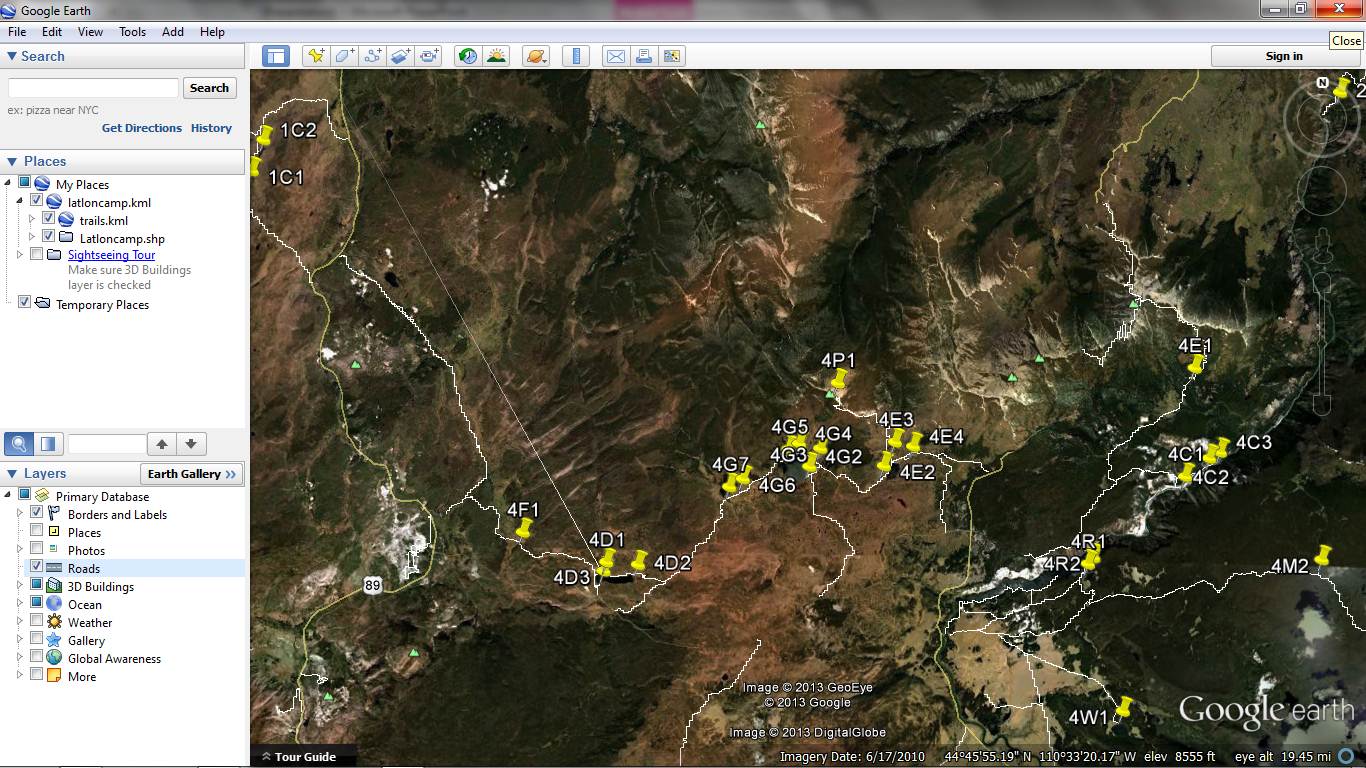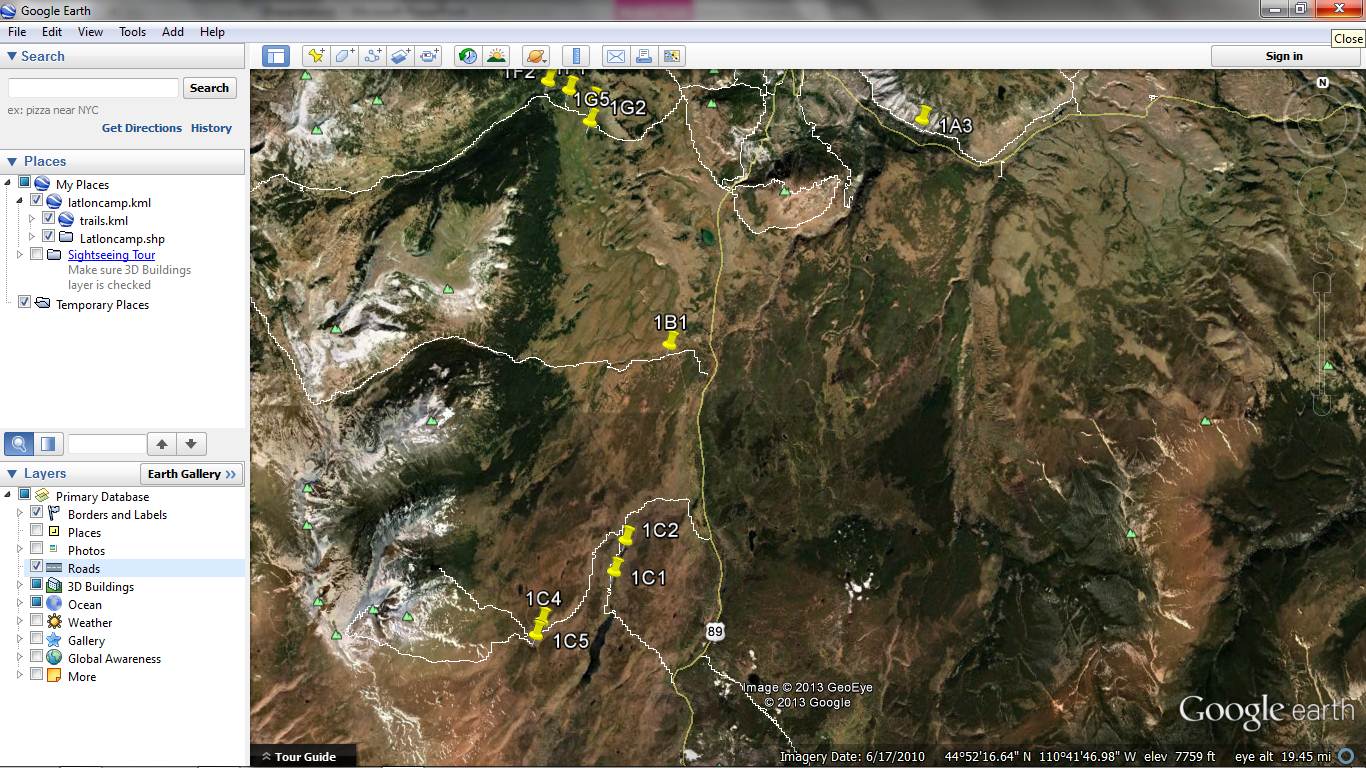It's winter time, and we're all enjoying the great outdoors, skiing and ice-fishing, right?
If you're thinking that you have to wait a few more years to hit the Yellowstone backcountry because you have little kids who can't walk too far or you don't want to risk all the things that can go wrong in the backcountry, this post is for you.
Or, if you are concerned about the physical abilities of someone in your group, these campsites can be considered as starting points for journeys into the backcountry.
There are indeed sites that are suitable for young children. And, it's incredibly important to help your young children build a foundation of outdoor activity for their lives and also build a love of the environment to help our next generations maintain the "wildness" of places like Yellowstone National Park and the true "wilderness" sections of our nation.
This is THE YEAR that I get out into the backcountry with our four-year old. I wanted to do it last year, but the pieces just didn't fall into place. That was the first year that Paul was potty-trained, so I had great schemes and plans for that. I don't think taking diapers into bear-heavy-backcountry is a good idea for various reasons. In any case, we got some good car-camping in but no backcountry.
So where are these magical places in the Yellowstone National Park backcountry that are good for little kids?
First, let's talk about the criteria for each spot.
1. Proximity to the car: I'm no idiot. I want the quickest and easiest bailout-plan possible. That means the spot has to be close to the car. This is generally less than two miles. I can cover that in 30 minutes while carrying my near-40-pound four-year old. This is for safety reasons as much as sanity reasons.
2. Flat trail: I want my kid to walk the entire way. That means it has to be flat so he can actually do it. When he walks, he gets the satisfaction of walking a long ways, and he'll also (hopefully) get tired enough to go to sleep when the sun goes down. And flat is good for Daddy, too, because I'm carrying a bit of extra gear.
3. Near appropriate water: I like to camp near water, mostly to make camp-life (ie getting water for morning coffee!) but also for the ambiance...you know, the "babbling brook" scene. But when you put little kids into the picture, EVERYTHING CHANGES. You MUST be careful and ensure you have "appropriate" water. By "appropriate," I mean it's small enough that the child in question can play in and around it safely, weather permitting of course.
Of course, the physical ability of the people in your group is the limiting factor. Some four year olds might be able to hike five miles in a day, but an adult can only do three. Keep that in mind, please. There are some GREAT spots just four miles from the road. I've mostly limited the camps here to three miles from the road. And if you're wondering about camps along the Yellowstone River and Slough Creek, they are not mentioned here because, even though they are only 4-5 miles from the trailhead, they include terrain that is not generally flat.
And, PLEASE be BEAR AWARE in your campsite.
1. A few campsites in the Old Faithful area, specifically OD1. This is probably the absolute easiest for young kids. It is one mile from the trailhead, absolutely flat, and you can bike in. There are no-kidding bathrooms (pit toilets) about a mile from your car (two miles from camp). The Firehole River is very pretty and manageable in this area, including good fishing. Think about it....if you have a bike trailer of some sort, you can pile everything in the bike along with the children and bike one mile from your car. If you need to bail out quickly, you grab all the kids and "bear-aware" items (like food, etc) and throw them in the trailer. Ten short minutes later, you are at your car, and three short minutes later you can be at a campground where your better-half is sleeping in your camper. The first go for your child in the backcountry can't have a better setup than this!
OG1 is 1.5 miles west of the Fountain Flats trailhead. Completely flat. Can be "marshy," so might have some bug issues. A creek.
OD4 is about 2 miles from the Fountain Flats trailhead. Completely flat. Can be "marshy," so might have some bug issues. A creek.
OD1 is away from the water and 4.3 miles from the Fountain Flats trailhead. You could bike half-way then walk. Try other sites first.
2. Up the road from Old Faithful, going north via Norris and fairly close to Mammoth, is Indian Creek and Campsite 1B1. This is a really nice area. A bit higher elevation, so it's cooler....just something to be aware of. The campsite is about 1.8 miles from the trailhead and a flat walk. The creek is great beginning in July, and there aren't alot of bugs. Check with the Ranger Station to see if Indian Creek still has some special, kid-friendly fishing rules.
3. West of Canyon Area are Ice Lake, Grebe Lake, and Cascade Lake. Of the three, I prefer Grebe Lake. During one of my trips to Grebe Lake three years ago, a couple of the group saw a large pack of wolves in this area, walking and fishing the Gibbon River between Grebe Lake and Wolf Lake (not listed here but in the vicinity).
Ice Lake has the closest campsites, and they are all between 1 and 2 miles of mostly flat walking. The lake is an average lake in Yellowstone.
Grebe Lake campsites (recommend 4G2 or 4G3) are a bit further, between 3-4 miles, with an undulating but generally flat walk in. These campsites have some nice tree coverage, and there are Arctic Grayling in Grebe Lake!
Cascade Lake campsites 4E3 and 4E4 are about two miles in after flat walking. This area can be quite marshy before mid-July and after heavy rains...that means bugs. The fishing in Cascade Lake can be pretty good. And if you have a more adventurous, older child, the view from Observation Peak is a must-see (but it is kind of tough for young legs to get to).

4. Near Roosevelt and Tower are the Hellroaring Creek campsites. These have a significantly steep hill to get down for starters, and that should be considered for both going down and coming back up on the way out. Outside of this hill, campsite 2H3 is AWESOME,and 2H4 is pretty nice, too. Hellroaring Creek is a great creek in August; the perfect size (ie depth, speed, volume, and with LOTS of rocks for little boys to throw) in August. On the way, there is a large bridge over the Yellowstone River that is sure to put any little boy or girl in awe. To get to 2H3, you have to ford the creek (not hard at all, but you might consider carrying little kids...still very doable), or you can take a long way around to go over a small bridge, adding a couple miles.
You can spend a day exploring upstream from camp, or going down to the confluence of the Yellowstone River and Hellroaring Creak, which is a really neat area (and good fishing)....be careful with kids at this confluence because the Yellowstone River runs very fast through the canyon here! Also, know that this is significant bear country. Other family members could stay at Roosevelt area during your backcountry night.

5. Moving west some more are two sites on the Lamar River, one of which is a favorite spot of mine in the park. About 3.5 miles upstream from the trailhead are campsites 3L1 and 3L2 at Cache Creek. 3L2 is preferred because it is in a nice, old-growth section of trees, with clear ground for kids to run around. Cache Creek is about 30 yards away and a good size for little kids (and good fishing for them, too!), and it is close to the Lamar River for exploring and fishing. The hike in requires an easy ford, and it has beautiful views. I think some young children might get bored on this hike because you can see forever, which makes it feel like you are moving very slowly. But once you get to 3L2, there is plenty of great areas for kids to play. Again, Cache Creek is very nice and has far more rocks than any little boy could throw in a few days! Be aware that this is significant bear country.

6. Lastly are the camps in the Bechler River area. They are last because you only want to go here in August and September. Before that, you will be eaten alive by mosquitoes. After that, you will be cold and wet. Neither are fun for adults or the kids. This is incredibly flat country, so walking is easy. But you can see a long ways, which makes it feel slow. The creek and river in this area are really slow and generally shallow, but very cold. Sites 9B1 and 9M1 are about three miles in, but if you can go another two miles (total of five miles), campsite 9B2 is really nice!




















